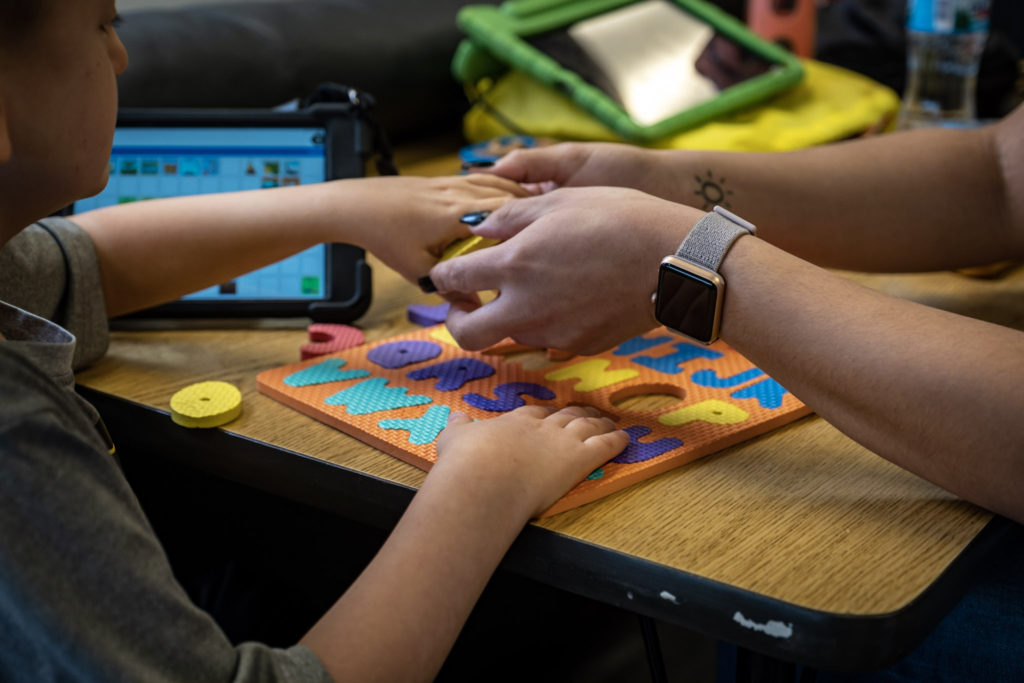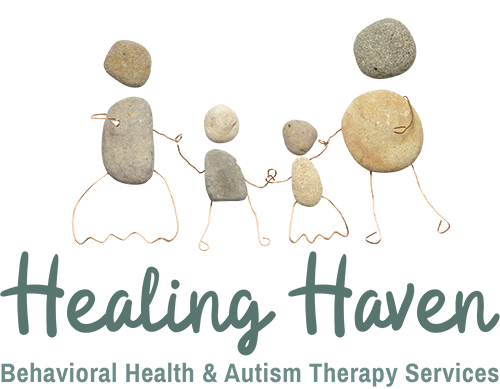What is ABA Therapy?

Behavior Analysis is the scientific study of behavior. Applied Behavior Analysis (ABA) is the practice of applying the psychological principles of learning theory in a systematic way to influence behavior. Many decades of research have validated treatments based on ABA therapy.
Over the past 40 years, several thousand published research studies have documented the effectiveness of ABA across a wide range of:
- populations (children and adults with mental illness, developmental disabilities and learning disorders)
- interventionists (parents, teachers and staff)
- settings (schools, homes, institutions, group homes, hospitals and business offices), and
- behaviors (language; social, academic, leisure and functional life skills, aggression, self-injury, oppositional and stereotyped behaviors)

Why ABA Therapy for Treating Children with Autism?
Choosing the right treatment for a child diagnosed with autism spectrum disorder (ASD) can be as complex as the diagnosis. Although there are many different treatment options available, many are experimental with little data to support their effectiveness.
While there are no miracle cures for autism, ABA therapy is evidenced-based and the most frequently recommended option for the treatment of ASD. Since the 1960s, therapists have been applying behavior analysis to help children with autism and related developmental disorders. It is the therapy most endorsed by reputable sources, including:
- The Centers for Disease Control (CDC)
- The National Institutes of Health (NIH)
- The U.S. Surgeon General
- The American Medical Association
- The American Academy of Pediatrics
- Most major insurance companies
- State health agencies
For these reasons, ABA therapy is the main focus of Healing Haven’s programs for children with autism spectrum disorder and other special needs.
The Role of ABA Therapy In a Child’s Development
According to a report from the Department of Education, “Children with disabilities who receive early intervention services show significant developmental progress a year later, and families report increased confidence in their ability to deal with their child.”
In a 1999 report, the United States Surgeon General concluded, “Thirty years of research demonstrated the efficacy of applied behavioral methods in reducing inappropriate behavior and in increasing communication, learning and appropriate social behavior.” Additionally, a number of completed studies have demonstrated that ABA techniques can produce improvements in communication, social relationships, play, self-care, school and employment. These studies involved age groups ranging from preschoolers to adults. Results for all age groups showed that ABA therapy increased participation in family and community activities.
ABA methods are used to support persons with autism in at least six ways:
- Increase behaviors (increase on-task behavior, or social interactions)
- Teach new skills (life skills, communication skills, or social skills)
- Self-control and self-monitoring procedures to maintain and generalize skills (such as job-related social skills)
- Generalize or transfer behavior from one situation or response to another (from completing assignments in the resource room to performing as well in the mainstream classroom)
- Restrict or narrow conditions under which interfering behaviors occur (modifying the learning environment)
- Reduce interfering behaviors (self-injury or stereotypy).
Other goals of ABA therapy include equipping parents and family members with valuable tools to help them support the child’s development outside of their ABA therapy time. Parents play a critical role to help their child generalize their new skills into the home and community.
ABA by the Numbers
As reported on the ASAT (Association for Science in Autism Treatment) website, “Many studies show that ABA is effective in increasing behaviors and teaching new skills (National Autism Center [NAC], 2015; Wong et al., 2014, 2015). In addition, many studies demonstrate that ABA is effective in reducing problem behavior (NAC, 2015). A number of studies also indicate that, when implemented intensively (more than 20 hours per week) and early in life (beginning prior to the age of 4 years), ABA may produce large gains in development and reductions in the need for special services (Reichow, 2012); however, large studies with strong experimental designs are needed to confirm the results reported for intensive, early intervention.”
ABA Therapy in Action
Healing Haven uses ABA therapy to improve the lives of children with ASD, and other developmental disabilities and learning disorders, by helping the child:
- Improve communication
- Increase age-appropriate social skills
- Improve independent daily living skills
- Decrease problematic behaviors while teaching functional replacement behaviors
After a detailed assessment of your child, the BCBA will create a unique program with consideration given to the child’s development needs, preferences and the overall family goals.
Even though ABA therapy programs are based on the individual needs of each client, most sessions share some similarities. Qualified and trained therapists (explained below) will work one-on-one to help your child achieve their goals through detailed instruction plans that break down skills into small steps. Starting with more basic skills, the therapists will help your child build up to more complex skills. Additionally, positive reinforcement plays a major role in support your child’s acquisition of new skills.
Therapists continually collect data on your child to determine which skills are improving and which skills they continue to struggle with. Through data collection your child’s team can identify where their therapy program may need to be modified in order to make sure your child achieves their goals
We believe in a more natural and holistic approach to help your child carry over what they are learning into other settings. Our therapists will work on skill building, Discrete Trial Training, play, as well as socialization and generalization of what they have learned. We also leverage incidental teaching, utilizing your child’s natural interests and motivations.
What is a BCBA, RBT and ABA Therapist?
A Board Certified Behavior Analyst is the manager of your child’s team who conducts assessments and designs programs to address your child’s unique needs. They provide the oversight and supervision of your child’s ABA therapists. Your child’s BCBA also meets with you at regular intervals to provide updates on your child’s progress and discuss ways to generalize new skills in the home.
A Registered Behavior Technician (RBT) is an ABA Therapist who has earned the RBT credential, which is paraprofessional certification by the BACB. Healing Haven provides RBT training for all new ABA Therapists joining our team. RBTs must complete a minimum 40 hour ABA training, an RBT Competency Assessment completed by a supervising BCBA to ensure they can perform an array of skills in the ABA field and pass the RBT exam.
Both RBT’s ad ABA Therapists provide the one-on-one direct therapy for your child, implementing the programs developed by your child’s BCBA. Healing Haven’s ABA Therapists receive extensive training in ABA techniques and methods. Training includes up to 120 hours of hands on training, 40 hours of online training required to obtain a Registered Behavior Technician certification, and extensive oversight after training to ensure treatment integrity. Your child’s BCBA also provides weekly supervision of the therapists to ensure the highest quality of therapy for your child.
